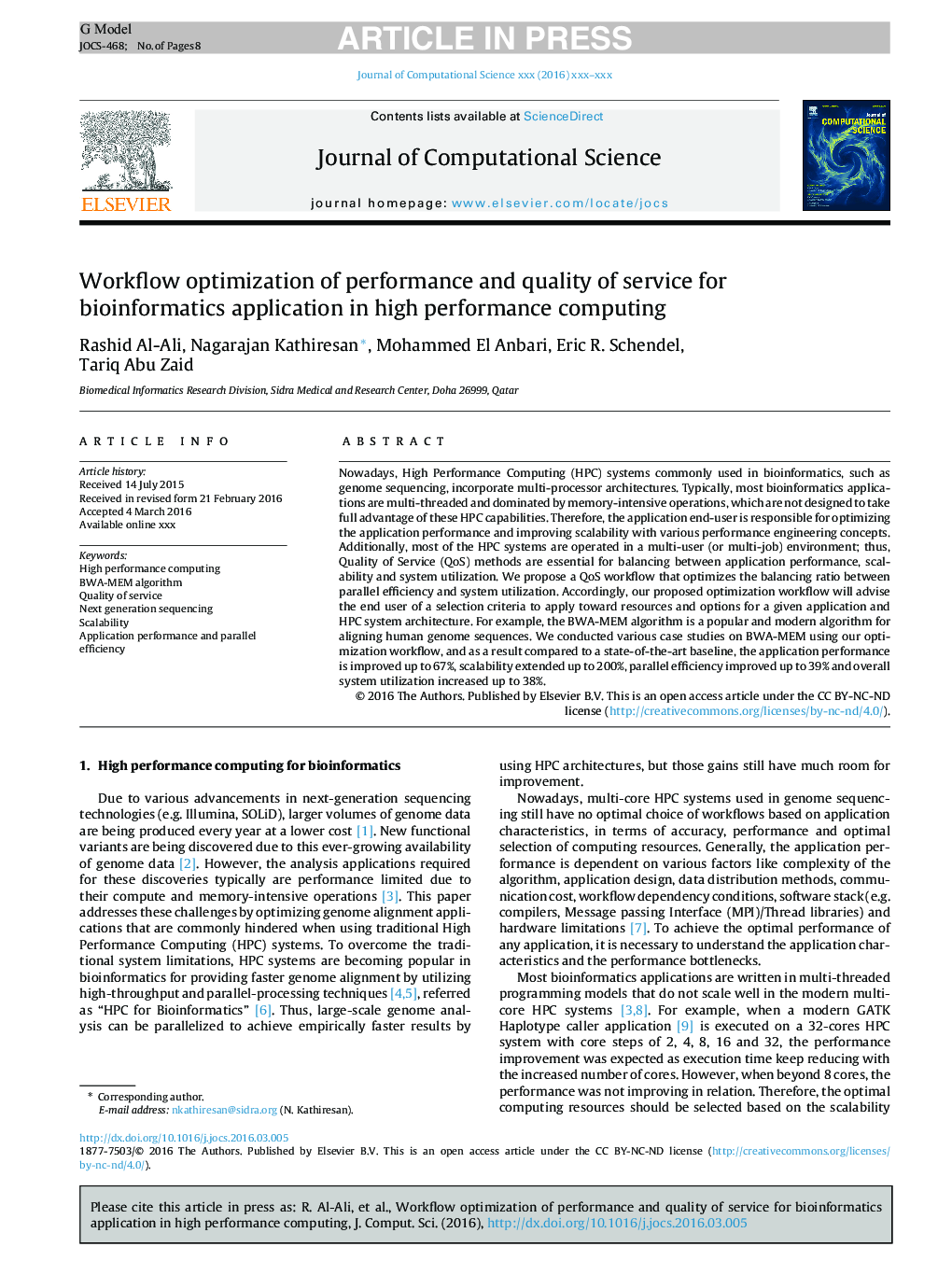| Article ID | Journal | Published Year | Pages | File Type |
|---|---|---|---|---|
| 6874541 | Journal of Computational Science | 2016 | 8 Pages |
Abstract
Nowadays, High Performance Computing (HPC) systems commonly used in bioinformatics, such as genome sequencing, incorporate multi-processor architectures. Typically, most bioinformatics applications are multi-threaded and dominated by memory-intensive operations, which are not designed to take full advantage of these HPC capabilities. Therefore, the application end-user is responsible for optimizing the application performance and improving scalability with various performance engineering concepts. Additionally, most of the HPC systems are operated in a multi-user (or multi-job) environment; thus, Quality of Service (QoS) methods are essential for balancing between application performance, scalability and system utilization. We propose a QoS workflow that optimizes the balancing ratio between parallel efficiency and system utilization. Accordingly, our proposed optimization workflow will advise the end user of a selection criteria to apply toward resources and options for a given application and HPC system architecture. For example, the BWA-MEM algorithm is a popular and modern algorithm for aligning human genome sequences. We conducted various case studies on BWA-MEM using our optimization workflow, and as a result compared to a state-of-the-art baseline, the application performance is improved up to 67%, scalability extended up to 200%, parallel efficiency improved up to 39% and overall system utilization increased up to 38%.
Related Topics
Physical Sciences and Engineering
Computer Science
Computational Theory and Mathematics
Authors
Rashid Al-Ali, Nagarajan Kathiresan, Mohammed El Anbari, Eric R. Schendel, Tariq Abu Zaid,
